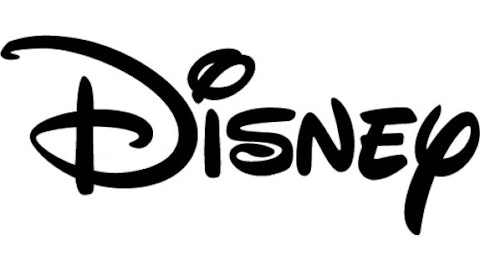Several years ago the video-based media pie was easy to cut. The studios and networks would create the content, and the cable and video rental companies would distribute it. Currently, the established companies such as Viacom, Inc. (NASDAQ:VIAB) and Comcast Corporation (NASDAQ:CMCSA) are increasingly competing with the likes of Google Inc (NASDAQ:GOOG) and Netflix, Inc. (NASDAQ:NFLX). While the old media companies still have an edge due to their predictable cash flow, it seems like their future is limited due to the following:
—faster growth rates at the new media companies,
—inability of the old media companies’ leadership to adapt to the new reality, and
—a drive toward user created content and content delivered on any mobile device.
Signs of these problems are the latest efforts of DISH Network Corp (NASDAQ:DISH), an established satellite cable TV provider, to acquire Clearwire, a provider of wireless broadband internet, and Comcast, which recently finalized a $40 billion purchase of NBC from General Electric Company (NYSE:GE). It is clear that the companies such as Viacom, Inc. (NASDAQ:VIAB) and Comcast Corporation (NASDAQ:CMCSA) are slowly but steadily losing major battles and relying on growth from acquisitions. Their newer competitors, such as Google and Netflix, are quickly gaining ground, and a few years from now the old timers will likely have to take out the white flag.
Growth vs. value
According to the digital analytics company COMSCORE, Inc. (NASDAQ:SCOR), the total number of videos viewed on the internet in May in the U.S. was nearly 41 billion (a 12% rise from the same period in 2012) with the top share of videos (14 billion or 34%) coming from Google related web sites. In fact, the first six companies in the comScore rankings are all newly established media companies with Viacom, Inc. (NASDAQ:VIAB) being the first of the old media companies in the list at number seven. And according to another media ad spending analytics firm, Nielsen Hldg NV (NYSE:NLSN), global TV ad spending grew by 4.3% in 2012 compared to 9.9% for internet ad spending.
With the increase in connected devices, it is clear that internet viewership will rise largely at the expense of TV viewership. This is already evident with the unprecedented TV series House of Cards and Downton Abbey being streamed exclusively on Netflix and Amazon.com respectively. Also, Amazon.com recently signed a deal with Viacom to stream exclusively some of Viacom’s own children content and Netflix signed a deal with Dreamworks Animation Skg Inc (NASDAQ:DWA) for TV shows made exclusively for Netflix.
In terms of revenue, cash flow and profits, the old media companies still have the lead while the new media companies are catching up with their faster growth rates. For example, during the quarter ending March 31 compared to the same period in 2012, Viacom, Comcast Corporation (NASDAQ:CMCSA), Google, and Netflix revenues changed by -6%, +3%, +22%, and +18%, respectively.
While Comcast experienced a slight increase in revenues, its cable video subscribers at the end of March were 21.9 million compared to 22.3 million at the end of March 2012 or a decline of nearly 2%. For comparison, Netflix domestic streaming subscribers at the end of the first quarter in were 27.9 million compared to 22 million at the end of the first quarter in 2012 or a 27% rise.
In terms of cash flow generating abilities, Viacom and Comcast trade at price to cash flow from operations ratios of 14.4 and 7.3 respectively, compared to 18 for Google. (Netflix had negative cash flow from operations for the trailing twelve months.)
Finally, in terms of operating profit margins, Viacom, Inc. (NASDAQ:VIAB), Comcast, Google, and Netflix operating margins for the quarter ended March 31 were 27%, 20%, 25%, and 3% respectively. It seems like Google has the most attractive combination of growth and profit margins. However, Google has a market capitalization of $295 billion and the company may not be able to sustain its current growth without venturing into new and riskier businesses.
The final two characteristics of the value vs. growth are that Viacom and Comcast common stocks pay quarterly dividends for annualized yields of 1.8% and 1.9% respectively. In addition, during the quarter ended March 31 these two value plays repurchased significant amount of shares. Viacom bought back 11.7 million Class B shares for about $700 million and has $3.3 billion remaining for repurchase under its current authorization. And Comcast repurchased 13 million shares for $500 million and had $6 billion authorized for share repurchase at the end of the first quarter. The second sign of a value versus growth orientation is the companies’ price to sales ratios of 2.5, 1.7, 5.5, and 3.5 for Viacom, Comcast Corporation (NASDAQ:CMCSA), Google and Netflix respectively.
Conclusion
Paid-TV is not likely to disappear soon. However, established media companies such as Viacom, Inc. (NASDAQ:VIAB) and Comcast have clearly failed in competing with the faster growing companies such as Google and Netflix.
The old media companies are trying to keep ground by repurchasing shares, buying out other companies and entering in deals with new media companies. Buying other companies is much more expensive and riskier than growing organically and through innovation. It is clear that innovation at Viacom and Comcast Corporation (NASDAQ:CMCSA) has been less successful that at Google and Netflix. While Viacom, Inc. (NASDAQ:VIAB) and Comcast are valued as dividend paying value companies, there are no catalysts on the horizon that could help realize any hidden value.
On the other hand, Google and Netflix continue to grow their audiences. For example, Netflix is expected to add over 5 million net new adds to its domestic streaming service. And YouTube is increasing its ability to monetize on the more than 6 billion hours per month of videos currently watched on its web site as indicated in this recent article.
It is clear that the future of video production and distribution lies in the hands of the new technology companies. While the established media companies are not likely to disappear, they would certainly continue to lose ground due to their striking reluctance to innovate and adapt to the new media reality. In the current media war, investors are better served if they side with the faster growing Google and Netflix than the established (but in decline) media powers.
Delian Naydenov has no position in any stocks mentioned. The Motley Fool recommends Google and Netflix. The Motley Fool owns shares of Google and Netflix.
The article The Media War Is Raging originally appeared on Fool.com.
Copyright © 1995 – 2013 The Motley Fool, LLC. All rights reserved. The Motley Fool has a disclosure policy.





